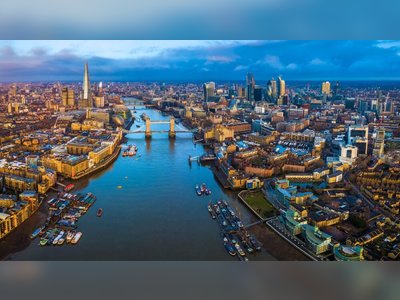
Defend the Public Defenders
Their ability to hold on to their job should not depend on the same people they challenge in court.
Public defense might be one of the rare professions in which doing one’s job too well can lead to being fired. The reasons for this are structural—public defenders are tasked with an obligation they cannot fulfill without upsetting those tasked with helping them fulfill it—and the system can be fixed structurally: by creating a state-level office whose job it is to defend public defenders.
Consider the case of two public defenders from Montgomery County, Pennsylvania, Dean Beer and Keisha Hudson, who say they were fired last year after filing an amicus brief describing as unacceptable and unconstitutional court decisions regarding bail that harmed their clients. (The county board responsible for their firing has not publicly commented on the personnel matter and did not respond to a request for comment on that matter for this story. According to The Philadelphia Inquirer, a letter from the county executive to Beer also cites the brief as cause, among other concerns—in particular, that Beer and Hudson had misused resources the previous summer when they assigned interns to review police officers’ social-media accounts for racist language, an accusation Hudson described as a pretext.)
At the time, Beer and Hudson were the highest-ranking attorneys in the Montgomery County office, considered one of the most effective public-defender offices in the state. But, like many public defenders around the country, Beer and Hudson were at the mercy of other actors, like the judges or attorneys general who lead the state judicial and executive branches. In many cases, these actors are responsible for providing the very resources necessary for public defenders to do their job. This relationship creates a conflict whereby a public defender can face retaliation for protecting their client’s rights against abuse or misbehavior. For the public-defense system to work more equitably, a public defender’s ability to hold on to their job should not depend on the same people they challenge in court.
In their amicus brief, Beer and Hudson notified the state supreme court that local judges were assigning excessive and unwarranted bail amounts to certain indigent defendants. The attorneys listed some bail decisions that might shock even the most casual observer of the criminal process. One bail was set at $50,000 for a nursing teen mother accused of a first offense, which resulted in her staying in jail without accommodations for pumping and preserving her breast milk. This minor did not have an attorney present at the bail determination; when an attorney was finally provided, more than two weeks later, the court declined a motion to reduce bail, noting that the minor could express her milk by hand. Both human decency and the rules of professional responsibility governing the legal profession support public defenders’ ability to make appellate courts aware of situations like these. Beer and Hudson’s reward for defending their clients, however, was losing their jobs. One judge demanded an apology and a public statement from Beer, and the Montgomery County Board of Commissioners abruptly fired them both.
Working as a public defender can be like walking a tightrope. Attorneys are constitutionally required to provide effective representation to their clients, ethically required to do so as officers of the court, and subject to the ordinary human desire to keep their jobs. Other actors in the criminal process complicate the public defender’s ability to do each of these things. At times, courts set restrictive and unconstitutional bail, show little patience for the time it takes attorneys to investigate and prepare cases, and fail to hold prosecutors accountable. Prosecutors sometimes bring so many cases that public defenders cannot meaningfully represent every client they are assigned, and then use this tactic to move cases quickly through the criminal process. Then, the leaders of the institutions within the executive and judicial branches of government can fire or reassign a public defender when they are displeased with his or her work. It can be a vicious cycle, where a public defender is fighting a battle against the very entity that must provide that public defender with the resources and support it needs to do so. So who defends public defenders when they are faced with serious consequences for challenging the decisions of opposing actors, when those very actors oversee the public-defender institution?
Most states house the public defender under either the judicial or executive branch, and each placement provides its own unique challenges. The executive branch has a clearly articulated objective of enforcing a jurisdiction’s laws. This role is in some ways similar to the public defender’s role of ensuring that law enforcement complies with both constitutional and statutory law, but it also contradicts the mandate of the public defender to protect the individuals charged with violating those laws.
The state judicial branch is tasked with advancing the resolution of the courtroom process neutrally, efficiently, and fairly. This role can sometimes lead courts to deprioritize the public defender’s needs in larger decisions about the courtroom process, as when judges feel they must support the requests of others involved in the criminal process, such as prosecutors and victims. Courts can also punish the public defender who acts in a manner inconsistent with the court’s view of how the process should evolve.
In order to see the dynamics at play, it is crucial to understand how the modern conception of the public defender originated. The institution was developed through a series of Supreme Court cases in the 1930s and ’40s interpreting the Sixth Amendment right to the effective assistance of counsel. The process culminated in the 1963 Supreme Court case Gideon v. Wainwright, which held that indigent defendants accused of felonies in state court must be appointed counsel. But in practice, that right can lose its efficacy at the whim of other actors in the criminal process who have conflicting interests.
One consequence of this system is chronic underfunding with limited paths for redress. For example, Bennett J. Baur, the chief public defender for the New Mexico Law Offices of the Public Defender, an institution managed through the state judicial branch, recognized his professional duty to ensure legal representation for all qualified defendants. Lack of adequate funding, however, created a difficult choice: provide representation that was constitutionally and ethically deficient, or risk the ire of the system’s management (and possibly his job) by not providing any representation to some defendants. When Baur’s funding requests were denied, he chose the latter option, and ordered one of his county offices to stop accepting new clients. A New Mexico district-court judge deemed Baur’s refusal to represent indigent clients a violation of a court order to participate in the criminal process and held him in contempt of court.
The obvious solution would be to make the public defender an independent institution, so it could define its own structure to best suit the needs of its client base without fear of reprisal. But doing so would overlook the need to secure funding in a government system where all actors must compete for limited resources. While the public defender plays an important role in the criminal-justice system and protects the rights of the public at large, its influence and political efficacy are often smaller in comparison to other executive or judicial agents. To secure a seat at the table, the public-defender institution requires an authoritative presence that can effectively pursue its agenda within the state structure.
Instead of asking for pure independence, public defenders should seek a protector, a state actor that possesses a degree of independence but is also able to effectively advocate for the institution. This actor’s primary responsibility would be to ensure that public defenders receive the resources they need to comply with constitutional and ethical duties. The position would also challenge the leadership in its assigned branch, including identifying practices that hinder public defenders’ ability to do their job and holding other actors accountable in the larger system.
Fortunately, the nation already has a model in place for such a position: the inspector general. Established by statute in 1978, the inspector general is a relatively independent government office tasked with neutrally assessing whether members of the executive branch have violated constitutional principles. The public-defender version could notify the court of constitutional and ethical violations related to the delivery of public-defender services. This position would also reaffirm the role of the public defender as a protector of the general public, as it serves as a check on the government’s intrusion into a citizen’s life through the criminal process.
Indeed, this watchdog role was at the heart of the creation of the public-defender institution. As the Court noted in Gideon, “From the very beginning, our state and national constitutions and laws have laid great emphasis on procedural and substantive safeguards designed to assure fair trials before impartial tribunals … This noble ideal cannot be realized if the poor man charged with crime has to face his accusers without a lawyer to assist him.” To fully realize that early vision, the institution requires structural changes, including the addition of a leader in an inspector-general role. This person would ensure that the attorneys who safeguard clients’ rights are provided for and are safe from reprisal for doing so—in other words, they would protect the protector.
When the state wields its power against a defendant in a criminal proceeding, the defendant uses the Sixth Amendment as a shield. After a conviction, the amendment transforms into a sword, as the defendant can bring a claim of ineffective assistance of counsel to challenge their conviction on appeal. The public-defender institution needs a similar system to protect clients’ rights. Reorganizing to more securely place itself in one of the state branches of government while also adding a defensive entity would allow the institution to exist in a more stable and effective manner.
Dean Beer and Keisha Hudson did exactly what the Constitution and professional rules mandate. This form of advocacy is critical to achieving the kind of reform protesters are currently demanding, calling attention to the racism and classism that have permeated the criminal-justice arena for centuries. The lack of an entity to address the attorneys’ dismissal is a fundamental flaw in a system meant to protect the powerless from the powerful. Fixing this flaw will protect not just public defenders, but their clients, too.
Consider the case of two public defenders from Montgomery County, Pennsylvania, Dean Beer and Keisha Hudson, who say they were fired last year after filing an amicus brief describing as unacceptable and unconstitutional court decisions regarding bail that harmed their clients. (The county board responsible for their firing has not publicly commented on the personnel matter and did not respond to a request for comment on that matter for this story. According to The Philadelphia Inquirer, a letter from the county executive to Beer also cites the brief as cause, among other concerns—in particular, that Beer and Hudson had misused resources the previous summer when they assigned interns to review police officers’ social-media accounts for racist language, an accusation Hudson described as a pretext.)
At the time, Beer and Hudson were the highest-ranking attorneys in the Montgomery County office, considered one of the most effective public-defender offices in the state. But, like many public defenders around the country, Beer and Hudson were at the mercy of other actors, like the judges or attorneys general who lead the state judicial and executive branches. In many cases, these actors are responsible for providing the very resources necessary for public defenders to do their job. This relationship creates a conflict whereby a public defender can face retaliation for protecting their client’s rights against abuse or misbehavior. For the public-defense system to work more equitably, a public defender’s ability to hold on to their job should not depend on the same people they challenge in court.
In their amicus brief, Beer and Hudson notified the state supreme court that local judges were assigning excessive and unwarranted bail amounts to certain indigent defendants. The attorneys listed some bail decisions that might shock even the most casual observer of the criminal process. One bail was set at $50,000 for a nursing teen mother accused of a first offense, which resulted in her staying in jail without accommodations for pumping and preserving her breast milk. This minor did not have an attorney present at the bail determination; when an attorney was finally provided, more than two weeks later, the court declined a motion to reduce bail, noting that the minor could express her milk by hand. Both human decency and the rules of professional responsibility governing the legal profession support public defenders’ ability to make appellate courts aware of situations like these. Beer and Hudson’s reward for defending their clients, however, was losing their jobs. One judge demanded an apology and a public statement from Beer, and the Montgomery County Board of Commissioners abruptly fired them both.
Working as a public defender can be like walking a tightrope. Attorneys are constitutionally required to provide effective representation to their clients, ethically required to do so as officers of the court, and subject to the ordinary human desire to keep their jobs. Other actors in the criminal process complicate the public defender’s ability to do each of these things. At times, courts set restrictive and unconstitutional bail, show little patience for the time it takes attorneys to investigate and prepare cases, and fail to hold prosecutors accountable. Prosecutors sometimes bring so many cases that public defenders cannot meaningfully represent every client they are assigned, and then use this tactic to move cases quickly through the criminal process. Then, the leaders of the institutions within the executive and judicial branches of government can fire or reassign a public defender when they are displeased with his or her work. It can be a vicious cycle, where a public defender is fighting a battle against the very entity that must provide that public defender with the resources and support it needs to do so. So who defends public defenders when they are faced with serious consequences for challenging the decisions of opposing actors, when those very actors oversee the public-defender institution?
Most states house the public defender under either the judicial or executive branch, and each placement provides its own unique challenges. The executive branch has a clearly articulated objective of enforcing a jurisdiction’s laws. This role is in some ways similar to the public defender’s role of ensuring that law enforcement complies with both constitutional and statutory law, but it also contradicts the mandate of the public defender to protect the individuals charged with violating those laws.
The state judicial branch is tasked with advancing the resolution of the courtroom process neutrally, efficiently, and fairly. This role can sometimes lead courts to deprioritize the public defender’s needs in larger decisions about the courtroom process, as when judges feel they must support the requests of others involved in the criminal process, such as prosecutors and victims. Courts can also punish the public defender who acts in a manner inconsistent with the court’s view of how the process should evolve.
In order to see the dynamics at play, it is crucial to understand how the modern conception of the public defender originated. The institution was developed through a series of Supreme Court cases in the 1930s and ’40s interpreting the Sixth Amendment right to the effective assistance of counsel. The process culminated in the 1963 Supreme Court case Gideon v. Wainwright, which held that indigent defendants accused of felonies in state court must be appointed counsel. But in practice, that right can lose its efficacy at the whim of other actors in the criminal process who have conflicting interests.
One consequence of this system is chronic underfunding with limited paths for redress. For example, Bennett J. Baur, the chief public defender for the New Mexico Law Offices of the Public Defender, an institution managed through the state judicial branch, recognized his professional duty to ensure legal representation for all qualified defendants. Lack of adequate funding, however, created a difficult choice: provide representation that was constitutionally and ethically deficient, or risk the ire of the system’s management (and possibly his job) by not providing any representation to some defendants. When Baur’s funding requests were denied, he chose the latter option, and ordered one of his county offices to stop accepting new clients. A New Mexico district-court judge deemed Baur’s refusal to represent indigent clients a violation of a court order to participate in the criminal process and held him in contempt of court.
The obvious solution would be to make the public defender an independent institution, so it could define its own structure to best suit the needs of its client base without fear of reprisal. But doing so would overlook the need to secure funding in a government system where all actors must compete for limited resources. While the public defender plays an important role in the criminal-justice system and protects the rights of the public at large, its influence and political efficacy are often smaller in comparison to other executive or judicial agents. To secure a seat at the table, the public-defender institution requires an authoritative presence that can effectively pursue its agenda within the state structure.
Instead of asking for pure independence, public defenders should seek a protector, a state actor that possesses a degree of independence but is also able to effectively advocate for the institution. This actor’s primary responsibility would be to ensure that public defenders receive the resources they need to comply with constitutional and ethical duties. The position would also challenge the leadership in its assigned branch, including identifying practices that hinder public defenders’ ability to do their job and holding other actors accountable in the larger system.
Fortunately, the nation already has a model in place for such a position: the inspector general. Established by statute in 1978, the inspector general is a relatively independent government office tasked with neutrally assessing whether members of the executive branch have violated constitutional principles. The public-defender version could notify the court of constitutional and ethical violations related to the delivery of public-defender services. This position would also reaffirm the role of the public defender as a protector of the general public, as it serves as a check on the government’s intrusion into a citizen’s life through the criminal process.
Indeed, this watchdog role was at the heart of the creation of the public-defender institution. As the Court noted in Gideon, “From the very beginning, our state and national constitutions and laws have laid great emphasis on procedural and substantive safeguards designed to assure fair trials before impartial tribunals … This noble ideal cannot be realized if the poor man charged with crime has to face his accusers without a lawyer to assist him.” To fully realize that early vision, the institution requires structural changes, including the addition of a leader in an inspector-general role. This person would ensure that the attorneys who safeguard clients’ rights are provided for and are safe from reprisal for doing so—in other words, they would protect the protector.
When the state wields its power against a defendant in a criminal proceeding, the defendant uses the Sixth Amendment as a shield. After a conviction, the amendment transforms into a sword, as the defendant can bring a claim of ineffective assistance of counsel to challenge their conviction on appeal. The public-defender institution needs a similar system to protect clients’ rights. Reorganizing to more securely place itself in one of the state branches of government while also adding a defensive entity would allow the institution to exist in a more stable and effective manner.
Dean Beer and Keisha Hudson did exactly what the Constitution and professional rules mandate. This form of advocacy is critical to achieving the kind of reform protesters are currently demanding, calling attention to the racism and classism that have permeated the criminal-justice arena for centuries. The lack of an entity to address the attorneys’ dismissal is a fundamental flaw in a system meant to protect the powerless from the powerful. Fixing this flaw will protect not just public defenders, but their clients, too.










